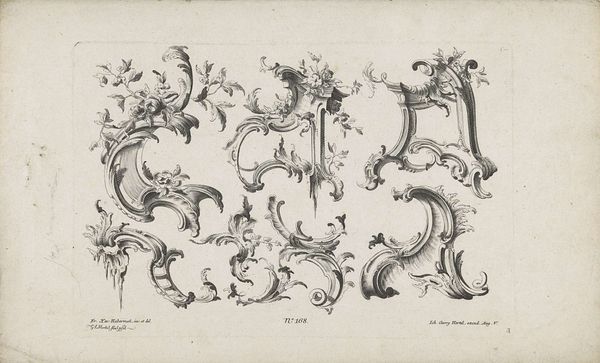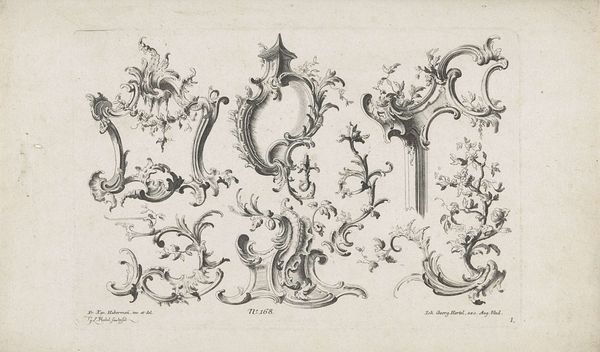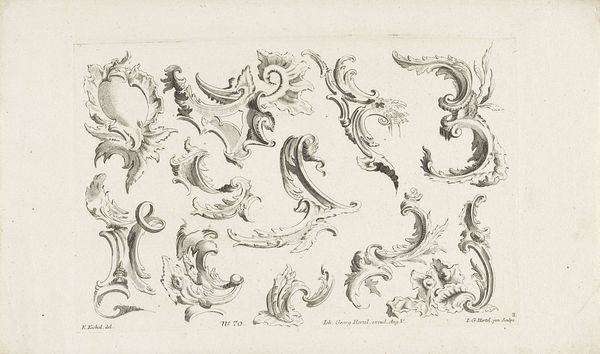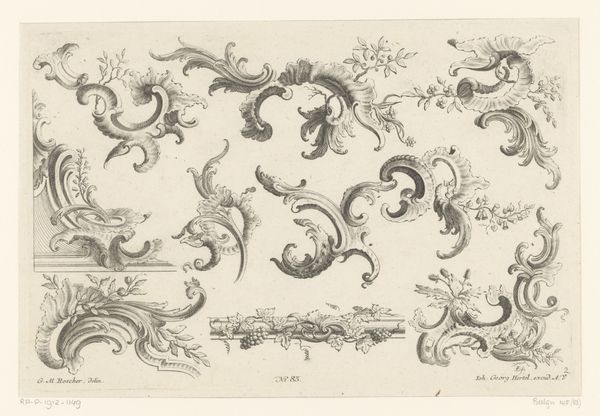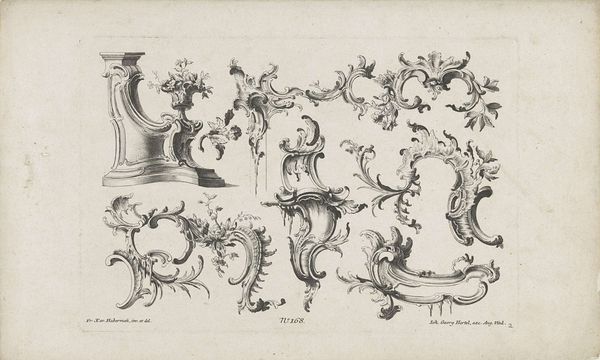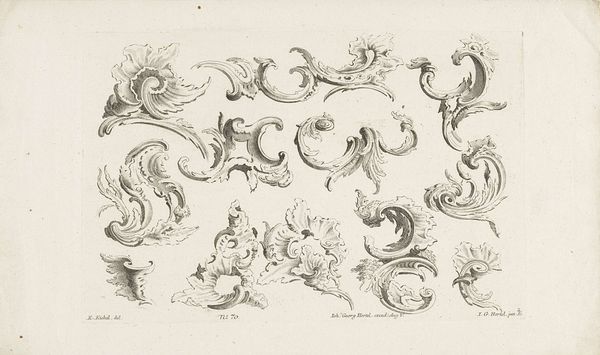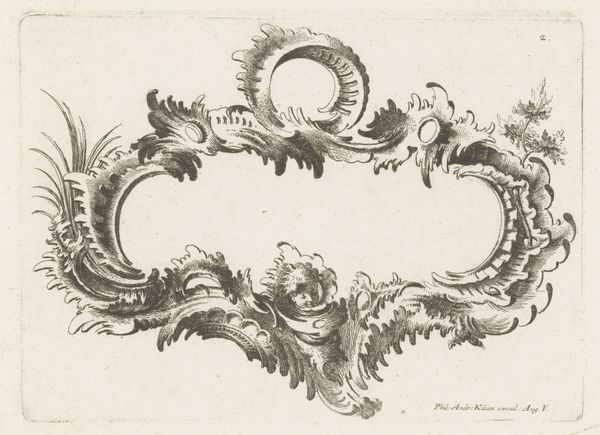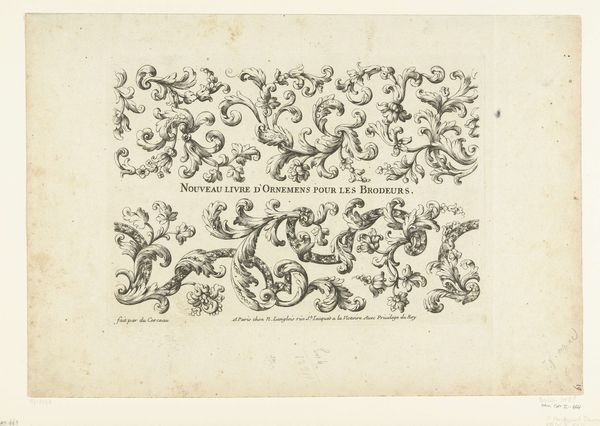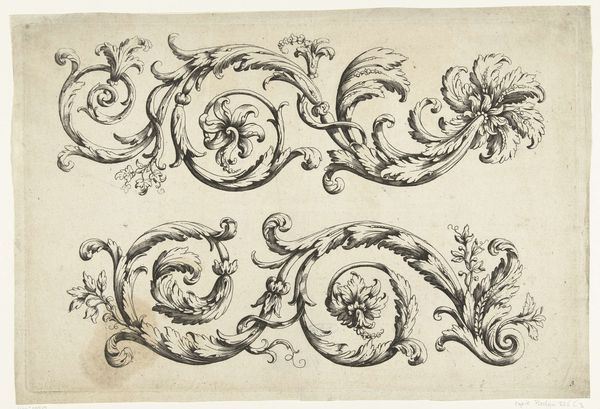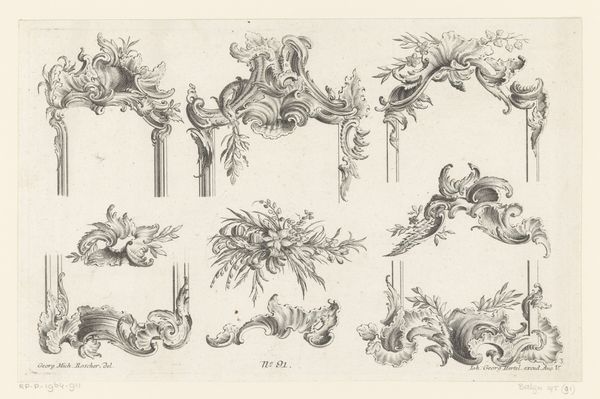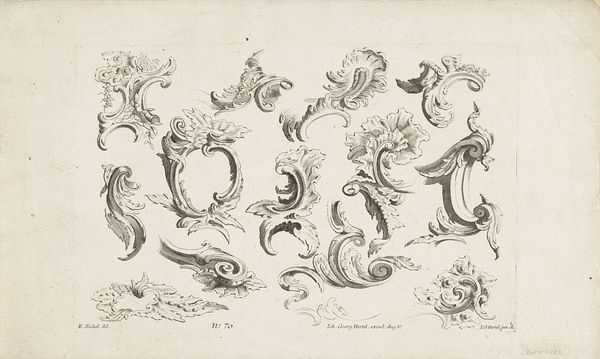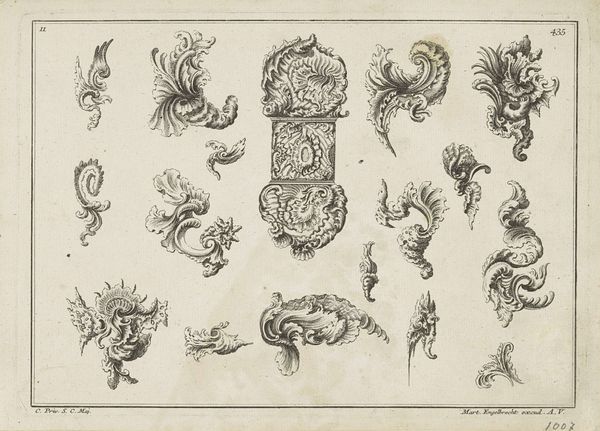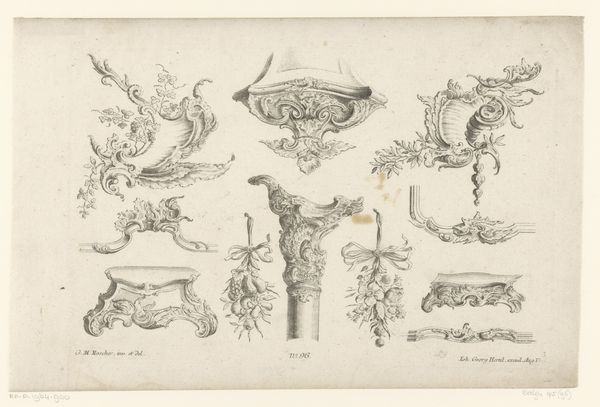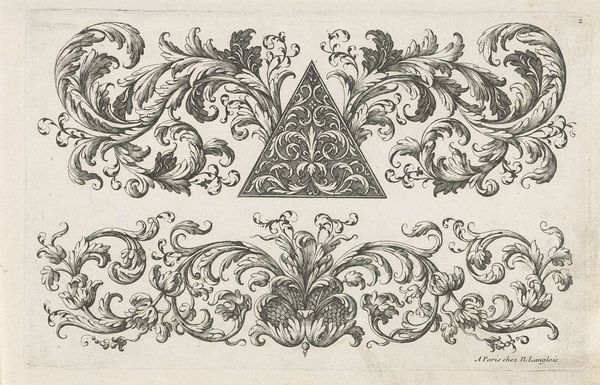
drawing, ornament, ink, pen
#
drawing
#
ornament
#
pen sketch
#
form
#
ink
#
geometric
#
pen
#
decorative-art
#
rococo
Dimensions: height 200 mm, width 300 mm
Copyright: Rijks Museum: Open Domain
Curator: This is a pen and ink drawing titled "Rocailles," made by Georg Leopold Hertel between 1750 and 1775. It is currently held in the collection of the Rijksmuseum. Editor: At first glance, there's a certain airy lightness to the arrangement. They seem to float on the page like architectural daydreams. Curator: Exactly. "Rocaille" refers to a specific kind of ornamentation popular in the Rococo era. Consider the process here. These aren't just abstract shapes; each flourish is meticulously planned, likely intended to be translated into plaster or wood by artisans. The drawing becomes a template, a set of instructions embedded with cultural significance. Editor: I see it also speaking to class and power, how ornament and decorative arts serve a purpose beyond aesthetics. These are signifiers of luxury and status during a period of massive social upheaval, a form of propaganda through display, a tool for distinguishing aristocracy from commoners. How was labor valued or devalued? What systems enabled this type of patronage and artistic production? Curator: A sharp point. Think too, about how this challenges the very notion of authorship. Hertel isn't necessarily crafting a unique 'art object' in the modern sense, but rather generating reproducible designs intended for practical use. His skill lies in visualizing these three-dimensional forms on paper. The materials, the ink, and pen, the paper itself – the raw components of artistic creation – all facilitate his, and other's labor. Editor: It also makes me think about women's labor in particular, often overlooked. Ornamentation like this frequently found its way into embroidery, textiles, or even detailed lacework. This was labor relegated as 'craft', its value undermined. It provokes us to think how patterns of inequality persist. Curator: Indeed, the Rococo style itself, despite its reputation for frivolity, relied on very serious craft practices. The drawings such as this highlight an intricate network of designers, artisans, and patrons all interwoven, a network from which certain people are excluded. Editor: Analyzing “Rocailles,” helps to deconstruct and unveil dynamics of gender and socio-economic privilege, allowing to situate this piece in larger conversations that reveal hierarchies embedded within materials. Curator: By observing Hertel’s technical expertise and these ornamental components, we're granted a greater understanding and insight into the aesthetic preferences and cultural norms of the 18th century. Editor: Right, and this also provides an entryway into comprehending these power systems at play, both back then and now.
Comments
No comments
Be the first to comment and join the conversation on the ultimate creative platform.
